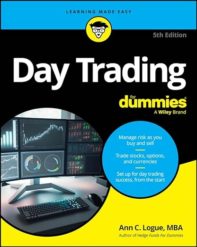 It’s the new year, and maybe that means a new job or a new commitment to your retirement plan.
It’s the new year, and maybe that means a new job or a new commitment to your retirement plan.
Once you set the money aside, you have to deal with all of the options for investing the money and all of the regulations for getting a break on your taxes.
Here’s one issue: what do you do with your retirement when you leave a job? What do you need to know about handling retirement rollovers?
The short answer is: roll it over into an IRA.
The long answer is that your retirement rollover is not free money. It is money for your retirement. Do not spend the money unless you absolutely, positively have to. To begin with, you have to pay taxes on the withdrawal, including a 10% penalty if you touch the money before age 59 1/2. This makes your retirement plan an expensive source of funds.
If you are facing a choice between not giving your children dinner or touching your retirement plan, then touch your retirement plan – but not until you reach that point. A vacation, a car, or a fancy new purse are not valid reasons to spend your retirement. Life is short, but it’s not THAT short.
So, assuming there is plenty of food in the house, you want to roll your retirement plan into another retirement plan. The easiest thing is to find a low-cost large-cap US equity mutual fund. (Please note that this may not be the best investment, and if you have the time and energy, you should do a research. If you have no better ideas, though, this type of fund should be good enough in the long run.) Vanguard, Fidelity, and T. Rowe Price are among the companies offering these types of funds, and none of these companies pay me to recommend them.
If you want to do research, the best place to start is Morningstar. They do an unbiased analysis of different types of investments.
Whatever mutual fund company or brokerage firm you decide to use, the customer service staff will know how to handle a retirement rollover. In many cases, the representative can do all the work once you give your authorization. In fact, that’s usually a better option than doing it yourself, because there will be a 20% tax applied on a distribution that you receive, even if you eventually roll the money over. Yes, you’ll get it back at tax time, but why deal with it?
It’s really that easy. The details on the IRS website cover all sorts of situations that probably don’t apply to you – you may want to refer to that information to make sure you aren’t missing something, but don’t let it scare you.
Saving money – and keeping it saved – is important for retirement. If you know the rules, you’ll do better.



It completely surprised me when Fidelity came out with a report showing how many of their customers cashed out of their 401(k)/IRA and incurred the penalty. I wish I had the article in front of me because I remember the number being staggering – around 40%.
Thanks for the comment. It is alarming. The system was set up as a tax shelter for people who already had pensions, but it is now the primary way most people will retire.